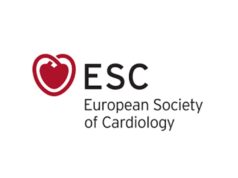The novel cryoballoon device (Arctic Front, Cryocath) appears safe and effective for patients with paroxysmal atrial fibrillation (AF), but not for those with persistent AF, according to German researchers.
Dr Thomas Neumann, Kerckhoff Heart Center, Bad Nauheim, and colleagues note that a radiofrequency (RF) approach is widely used in this application. They investigated the utility of the new device in circumferential pulmonary vein electrical isolation in 293 drug refractory patients with paroxysmal AF and 53 with persistent AF.
“The 1,360 of 1,403 pulmonary veins (97%) were targeted with balloons or balloon in combination with the use of Freezer Max (Cryocath),” the researchers reported in July in the Journal of the American College of Cardiology. This study was also presented at the recent Cardiostim by Dr Burghard Schumacher, Bad Neuheim.
“The primary endpoints of this non-randomised study were the acute isolation rate of the targeted pulmonary vein and the first ECG documented recurrence of AF,” Neumann said.
After a median follow-up of 12 months and after a three-month blanking period in which all patients were treated with antiarrhythmic agents, circumferential pulmonary vein isolation with the cryoballoon device resulted in the maintenance of sinus rhythm without antiarrhythmic drug therapy in 74% of patients with paroxysmal AF. Maintenance of sinus rhythm without antiarrhythmic drug therapy was successful in just 42% of patients with persistent AF. Nearly 12% of patients were unable to discontinue to antiarrhythmic drug therapy (amiodarone or other class 1 agents) after the three-month blanking period.
“We speculate that one reason for poor outcome in persistent AF might be that the depth of penetration using the cryoballoon technique is inadequate,” wrote Neumann and colleagues. “Possibly, the strategy of atrial pulmonary vein isolation or the cryoballoon device does not produce sufficient substrate modification as required in persistent AF”.
There were no strokes, no pulmonary vein stenosis, no esophageal injury, and no coronary artery injury as sometimes occurs with RF ablation – RF ablations typically have a major complication rate of around 4%. The main complication reported was a temporary palsy of the phrenic nerve.
The investigators concluded that, “pulmonary vein isolation with the cryoballoon technique is feasible. Sinus rhythm can be maintained in the majority of patients with paroxysmal AF by circumferential pulmonary vein isolation using a cryoballoon ablation system.” However, Neumann and his colleagues added that “this cryoballoon ablation strategy is not recommended in patients with persistent AF.” The authors wrote that a conclusive comparison between the cryoablation technology and RF ablation strategies will require randomised trials.
Lower complication rate, but more studies needed
According to Dr Philippe Ritter, president of Cardiostim, “Cryoablation appears to have a lower complication rate than RF ablation and is easier to perform… but we need some more years to look at it and compare it with RF ablation.”
Another study presented at Cardiostim by Dr Yves Van Belle, Rotterdam, the Netherlands, looked at 139 patients who underwent cryoablation of the pulmonary veins for paroxysmal AF.
Seventy-seven patients initially had no AF on antiarrhythmic drugs following ablation, while 62 had an early recurrence. Of the 77 whose first procedure was a success, almost 70% were eventually free of AF without the use of antiarrhythmics. Of the 62 in whom the procedure failed the first time, some opted for repeat procedures while others opted for medical treatment. Overall, the success of cryoablation was 59% after a mean of 1.2 procedures, with a follow-up time of a year, on average.
Like the German group, Van Belle and colleagues noted a temporary palsy of the phrenic nerve as the main complication of the procedure. He concluded that “isolation of the pulmonary veins with cryothermal balloon is an effective treatment for paroxysmal AF, resulting in high clinical success rate even after a single procedure.”












